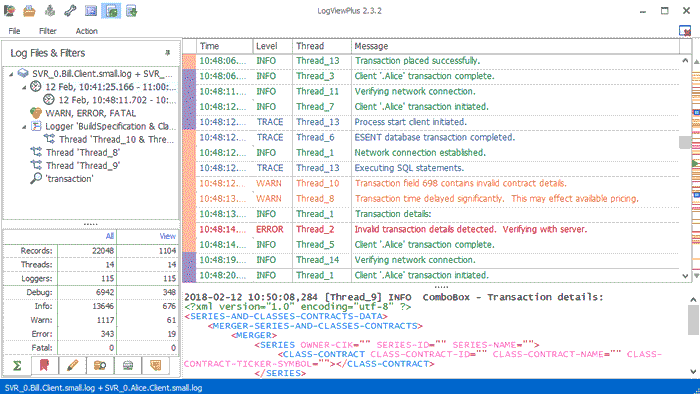What Is a Log File: Definition & Types of Logs
A log file is an event that occurred at a specific time and may contain metadata that makes it meaningful.
Log files are historical records of everything that happens in a system, including Events such as transactions, errors, and intrusions. These data can be transferred in different ways structured, semi-structured and unstructured.
The best and most specialized method for troubleshooting and fixing the problems of operating systems, applications, and services is to check the log files. The files the application or service uses about its activities and performance create.
The basic anatomy of a log file is as follows:
- Timestamp: The exact time at which the recorded event occurred.
- User information
- Event Information: This shows what the action was.
A log file is a small file that is created automatically and contains a lot of information about the events in the software or operating system. All these things are recorded in the log file. They can include a wide variety of things. Most of the time, log files are used to review events that occur during the daily operation of an operating system or application.
Where do the log files come from?
Almost anything produces a copy of a log, for example:
- Programs
- Containers
- Databases
- Firewalls
- endpoints
- Internet of Things devices
- networks
- servers
- Web services
The list goes on, but the bottom line is that almost every infrastructure you interact with daily produces a log file.

How can I open a log file?
Since most recorded files are recorded in plain text, it’s fine to use any text editor to open them. By default, Windows uses Notepad to open a LOG file when you click it. We suggest using the Notepad++ program, which you can download from here.
You can also open a LOG file from word processing programs such as Microsoft Word, LibreOffice, OpenOffice, Notepad++, and more.
Who uses the log file?
Log files can play almost any role in an organization. Following are some of the most common uses of log files based on job function:
Types of logs
Almost every component in a network produces a different type of data, and each component collects that data in its logs. For this reason, there are many different types of logs, such as:
Event logs
The Event Log is a high-level log that records network traffic and usage information, such as login attempts, failed password attempts, and application events.
Server logs
The server log is a text document containing a history of activities related to a specific server in a certain period.
System logs
A system log or Syslog is a record of operating system events. This log contains startup messages, system changes, unexpected shutdowns, errors and warnings, and other important processes. Windows, Linux, and macOS all generate Syslog.
Authorization logs and access logs
The authorization and access logs contain a list of people or robots with access to certain programs or files.
Change log
Change logs contain a chronological list of changes made to a program or file.
Accessibility log
Availability Log tracks system performance, update time, and availability.
Source log
resource logs (Resource Log); Resources provide information about connectivity issues and capacity limitations.
Threat event log
Threat logs contain information about system, file, or program traffic that matches a predefined security profile in a firewall.

